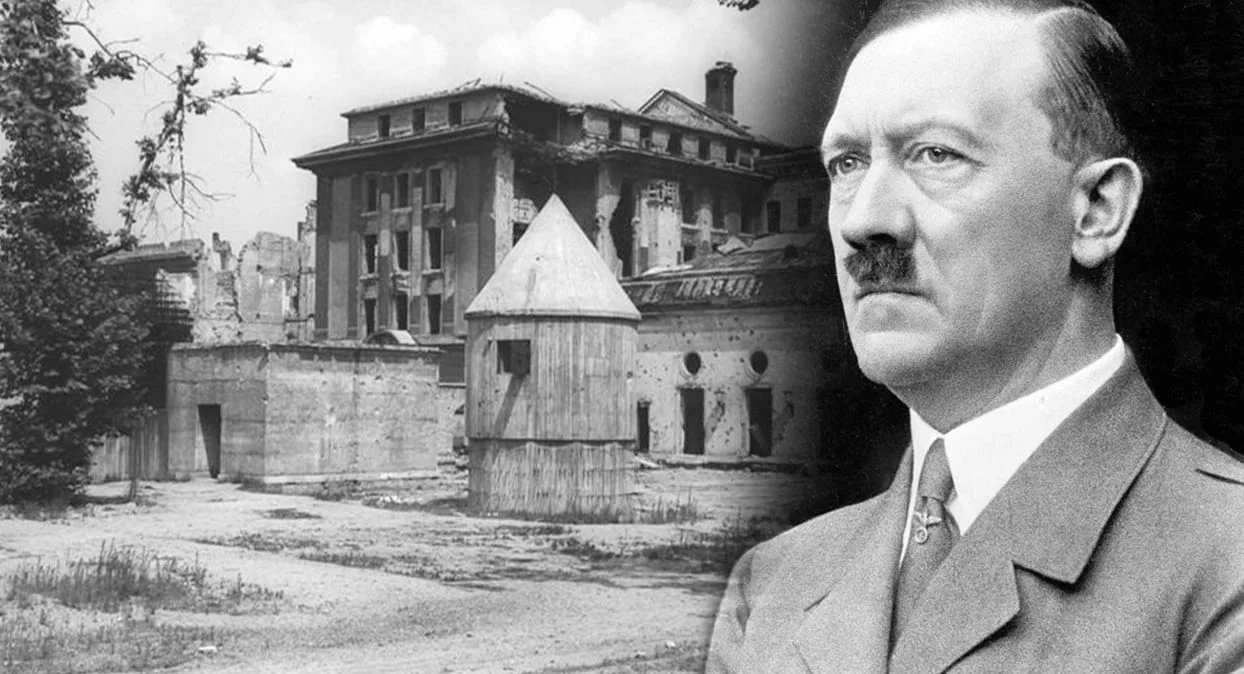The Führerbunker was a subterranean bunker complex in Berlin, Germany, that served as Hitler’s final Führer Headquarters in the last months of the Second World War.
Increased Allied bombing led to the expansion of the existing Reich Chancellery Air-Raid Shelter into a large underground network of rooms called the Vorbunker (meaning “upper bunker” or “forward bunker”).
The Vorbunker contained the basics for sustainability underground, including a generator room with ventilators, a shower and washroom, dormitories, and toilet facilities that branch off from a linear route through a central dining room corridor.
A second bunker called the Führerbunker was added beneath the garden of the Reich Chancellery in 1944 by the Hochtief construction company. Both bunkers were connected via a guarded stairway that could be closed off with a system of bulkheads and steel doors.
The Führerbunker served as the command centre for the remnants of the third Reich’s leadership, as well as the private chambers for the Führer, his wife Eva Braun, and highly ranked members of the Nazi elite.
Although smaller than the Vorbunker, the Führerbunker contained briefing rooms, a telephone exchange, a machine room, and several bedrooms all furnished with items removed from the Chancellery.
Hitler and his senior staff moved into the Führerbunker on the 16th of January 1945, joined by Eva Braun and Joseph Goebbels in April, while Magda Goebbels and their six children took residence in the Vorbunker.
On the 19th April, the Soviet Army recommenced the Berlin Strategic Offensive Operation and began to mobilise troops to encircle the city. Hitler made his last trip to the surface on his 56th birthday (20th April), where he awarded the Iron Cross to boys from the Hitler Youth in the garden of the Reich Chancellery.
With the arrival of Soviet forces in Berlin’s suburbs, defence of the city was organised by General Helmuth Weidling, consisting of several depleted and disorganised Wehrmacht and Waffen-SS divisions, along with poorly trained Volkssturm and Hitler Youth members.
By the morning of the 30th of April, Weidling met with Hitler to advise that the Soviet Army was almost at the gates of the Reich Chancellery. Having also learned of the execution of Benito Mussolini in which the dictator was strung up by his heels and thrown in the gutter, Hitler had finally come to terms that the only resolution to escape being captured and face humiliation was to commit suicide.
Hitler, two secretaries, and his personal cook then had lunch, after which Hitler and Braun said goodbye to members of the bunker staff and several military officers, before entering his personal study where he committed suicide by gunshot.
In the aftermath of the war, Stalin ordered the levelling of the Chancellery buildings, with subsequent attempts by the Soviet and East German government to blow up the Führerbunker and Vorbunker. By the 1980’s and early 1990’s, the area was flattened to make way for residential flats, with excavations to construct the foundations revealing surviving sections of both bunkers.
Construction crews found the Führerbunker had survived, albeit flooded and the interior walls destroyed. The Vorbunker was in a better condition of preservation, with the ventilation pipes still in situ, many of the walls still tiled, and decaying metal safes still standing upright. Several sections of the bunkers were demolished during the construction works, whilst the remainder was filled in and sealed off from public view forever.
View Full Screen – Click Here
Header Image Credit : Bundesarchiv – CC-BY-SA 3.0





